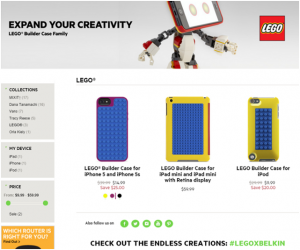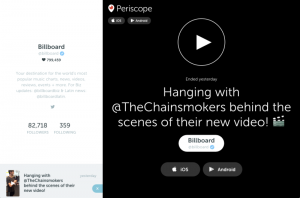
A Pay-Per-Click (PPC) strategy is one of the quickest ways to attract potential customers to your website and increase conversions. Business owners can present advertisements with the help of tools like Google AdWords, Yahoo! Search Marketing, etc., in the sponsored results section that comes up in search result pages and each time there is a click by someone on the ad which takes them automatically to the site, the business has to pay.
If your strategy is not implemented properly, pay per click marketing can be risky for your business and cost a lot of money. You can get a deep hole in your pockets with this kind of advertising and still fail to lure in customers, especially if they are new to PPC services. You should definitely make it a point to avoid the following mistakes while you are starting out with a PPC marketing Strategy.

The Long and Short of It
The same theme behind all of the mistakes usually entails lack of measuring of a specific goal and zero planning. You should have a specific goal in mind while venturing out this way. Ask yourself what you want to achieve at the end of the day with your online efforts. Is it branding? Is it leads? Or is it sales? A well-sketched plan keeps you on track and helps you to modify or adjust your course of action if and when that’s required to reach your target audiences.

Example:
You wouldn’t start a real estate business without planning. So why would you expect an online PPC marketing strategy to work without planning and goals?
 Planning your PPC campaign wisely will save your organization time and money in the future.
Planning your PPC campaign wisely will save your organization time and money in the future.
If your real estate business is set in a certain location and you really want to target people with a certain problem, you need to do your research and find the keywords they use and the words that will work in ‘New York’ and ‘Oklahoma.’
Another serious problem
That brings us to our next big mistake.
Lack of a Call to Action: Lack of a clear call to action on the landing page is not an uncommon mistake. Different CTAs need to be tested to determine which messages produce the best results. It’s important to know that Google does have restrictions on certain call to action phrases, so you need to keep away from phrases like “click here”, but expressions like “buy now”, “start today”, “download now” can be used without any worry for your PPC marketing strategy.
Example:
‘Click here’ is probably the worst call to action. It is too vague to give any information to the visitor about where they are going and what they are likely to find. You really need to create better ad copy. Calls to action must be encouraging enough to get people to really act.
If you offer legal services, for example, try a better PPC marketing strategy, and add the words, ‘speak to a lawyer now’ as the call to action. This way the visitor knows they will be speaking to an expert and can click on it to cut through the website if they need support urgently.
You can easily add and test your Call to Action variants by using the Pagewiz platform. You can change your design, track results and use the strongest variants as you create effective landing pages and edit your form’s settings to match your PPC Marketing Strategy.
To Pose another Scenario
 Your photographer searching for a camera wants to get to his prize. Bombarding him with multiple forms may negatively impact your PPC Marketing Strategy.
Your photographer searching for a camera wants to get to his prize. Bombarding him with multiple forms may negatively impact your PPC Marketing Strategy.
Sending visitors to your homepage: Suppose you are selling a specific model of a digital camera on your website and you are running a PPC ad for the keyword, “Sony CyberShot DSC-WX50.” You set up the ad in such a way that it runs whenever this specific keyword is searched on the search engine which you have chosen and you also take the help of an URL which redirects readers who click on the ad to your site’s home page. If you are in luck, then even after this experience the user will stick around and look for the exact camera model.
But why take the chance and test his or her patience when it is ultimately you who has a high chance of suffering a loss if your potential customer decides to go to your rival website and purchase their desired camera? It would work in your favor, and greatly improve your PPC marketing strategy if you put up a link to the camera’s product page and make your customer’s experience as much hassle free as possible.
Example 1:
When your ad is clicked by prospective buyers, then should be taken to a page which is related to the keywords used for the ad. Let’s take the example of this keyword : blue socks. Now if someone types the keyword “blue socks”, then should arrive at a page where she has the option to choose from a wide range of blue socks. Had she landed on an irrelevant page, there was a high chance of her losing interest and moving on to the next website which sells blue socks.
Example 2:
Say you are looking for a pair of Nike shoes and you type “buy nike shoes” on Google. The first paid search result shows you the exact pair you want, but when you click it sends you to the homepage of an online shopping portal and now you have to search through this website to find the right pair of Nike shoes.
This is the problem with sending people to the homepage and most visitors will simply give up on the site if they can’t instantly find the information they were looking for.
Another problem with the Wrong Location
Sending visitors to your Contact Page: Some businesses make the classic mistake of sending PPC visitors straight to their website’s contact page so that the visitors have no other option except opting for email newsletters or lead generation form submissions. This can only lead to frustrated customers and a lack of sale. On top of that it is directly in conflict with PPC platform guidelines. If your mode of advertising is Google AdWords keep in mind that making visitors fill out contact forms with the promise of something free in return is against the search giant’s principle. Having an outreach strategy is good. But it shouldn’t be misleading.
Example:
Imagine you want to find out more about investing in stocks and you click a paid link that leads to an investment advisor’s website. What you are looking for is advice, but instead you get sent straight to the contact and signup page.
You don’t want to sign up for a newsletter or have contact with a website before you get the information you want. So this could be quite frustrating.
This can be related to several Pay Per Click failures:
Lack of testing: Experts recommend that the site owners have at least three types of advert running. Also, new ads should be tested each and every month so that your CTR is improved
on a continuous basis. Most people who advertise fail to keep their ads updated regularly which often signifies that their promotions, messaging and most important of all the prices are all old and thus invalid. This has a negative effect on both user experience and CTR. The descriptions, display URLs and calls to action can be tested along with new messaging like benefits, promotions, and prices.

Failing to split test your ad text: You should not run PPC ads without examining them first. If you want the most fruitful results. Your ads can be split-tested by generating several versions of the ad’s text for each PPC ad group. This way you can understand clearly which particular wording gets you the most click throughs and on-site conversions. Almost all PPC engines permits one to split-test but you need to check that your ad variations are displayed at random so that they create relevant data. At times predictable algorithms are used by some PPC platforms to showcase the ad variation which has the highest chances of making it to the top but note that this reduces the integrity of your split-test data.
Relying entirely on ‘broad match’ keyword ads: Broad match keywords are shown whenever someone searches all or part of your chosen keyword phrase. Although this offers the highest traffic out there one tends to compromise on relevance due to this. For instance you are a clothing store specializing in wedding dresses and you have chosen the phrase “wedding gowns” with a broad match ad. Now your ad will display itself on the result page when one searches for “wedding gowns” but it could also exhibit itself for phrases like “wedding clothes” , “Wedding accessories”, etc. In this case, you are squandering money on irrelevant searches. Yes it is true that once you set your ads to phrase or exact match, it may reduce your traffic potential but at least it guarantees that your ads are appearing for search queries which are the most pertinent to your business. You can check out the website of inbound marketing Phoenix to improve your online marketing skills.
Example:
A great example of this is when a carpet repairman wants to advertise on search but uses the word “carpet” for his ads. Now his ad dollars are wasted on search terms such as “carpet sales” and “carpet decor” while he only does repairs.
And Then Think About Your PPC Marketing Strategy’s Structure
No campaign structure: A structure has the ability to arrange your campaigns based on themes , making it an effortless task to calculate and control besides keeping your message relevant to the visitors. It would be a wise decision to organize your campaigns in a more or less similar way like your website layout by building a campaign for each of the significant categories for either products or services. This can be accompanied by more definite products or services in your ad groups.
 The way you structure your strategy for a PPC Campaign should consider the terrain several steps ahead.
The way you structure your strategy for a PPC Campaign should consider the terrain several steps ahead.
Example:
Create a new campaign for each of your geographical locations. You may want to add a campaign for your services in ‘London’ separately from the one you offer in “New York.”

Not taking advantage of negative keywords: Most people are unable to make use of negative keywords which tend to stop ads from showing themselves whenever specific words are searched for. If we take the example of “manga” as a negative keyword and add it under the PPC ad group then it would forbid your “books” broad match ad from displaying itself in results for manga comics. Including negative keywords to your PPC campaigns is one way to manage relevancy without diminishing prospective traffic of broad match ads. Keep in mind that you need to be patient and and do your homework by researching on negative keywords that can affect your campaign.

Negative keywords are words or expressions that when searched online wouldn’t show your ads. For example if you are the owner of an online bookstore where you sell every type of books except comics. So if you include “manga” as a negative keyword , when someone searches for comics (manga), your advertisement will not appear.
Example:
If an electrician wants to find new customers, he would do well to add ‘job’ as a negative keyword in his PPC campaign. This means people who are looking for ‘electrician jobs’ won’t be targeted by the campaign.
To Sum Up:
Pay-Per-Click marketing can be an amazing tool that makes advertising on the web extremely easy. But that doesn’t mean it doesn’t have a learning curve to get right. If you really want to push your dollars to the limit, start by developing an ad campaign strategy, pick the right terms and keep a track of the key metrics mentioned above. With a little bit of thought and practice you could boost the number of visitors to your site in a very short while.
Also, remember that things move fast on the web and things that may be obvious now will be completely irrelevant in a few years. Keep up-to-date with all the latest in the industry and adapt your strategy accordingly.
Digital & Social Articles on Business 2 Community
(58)








